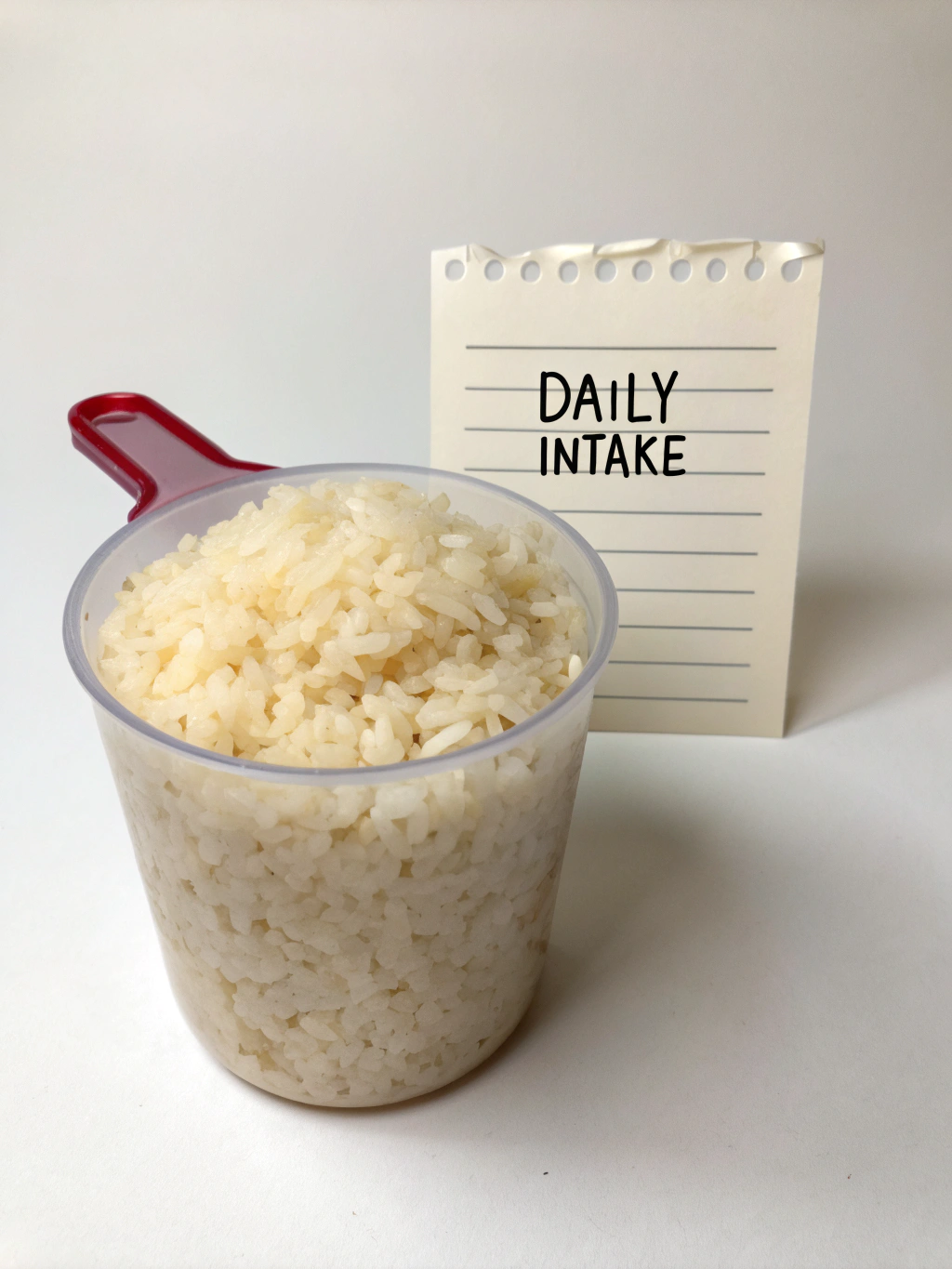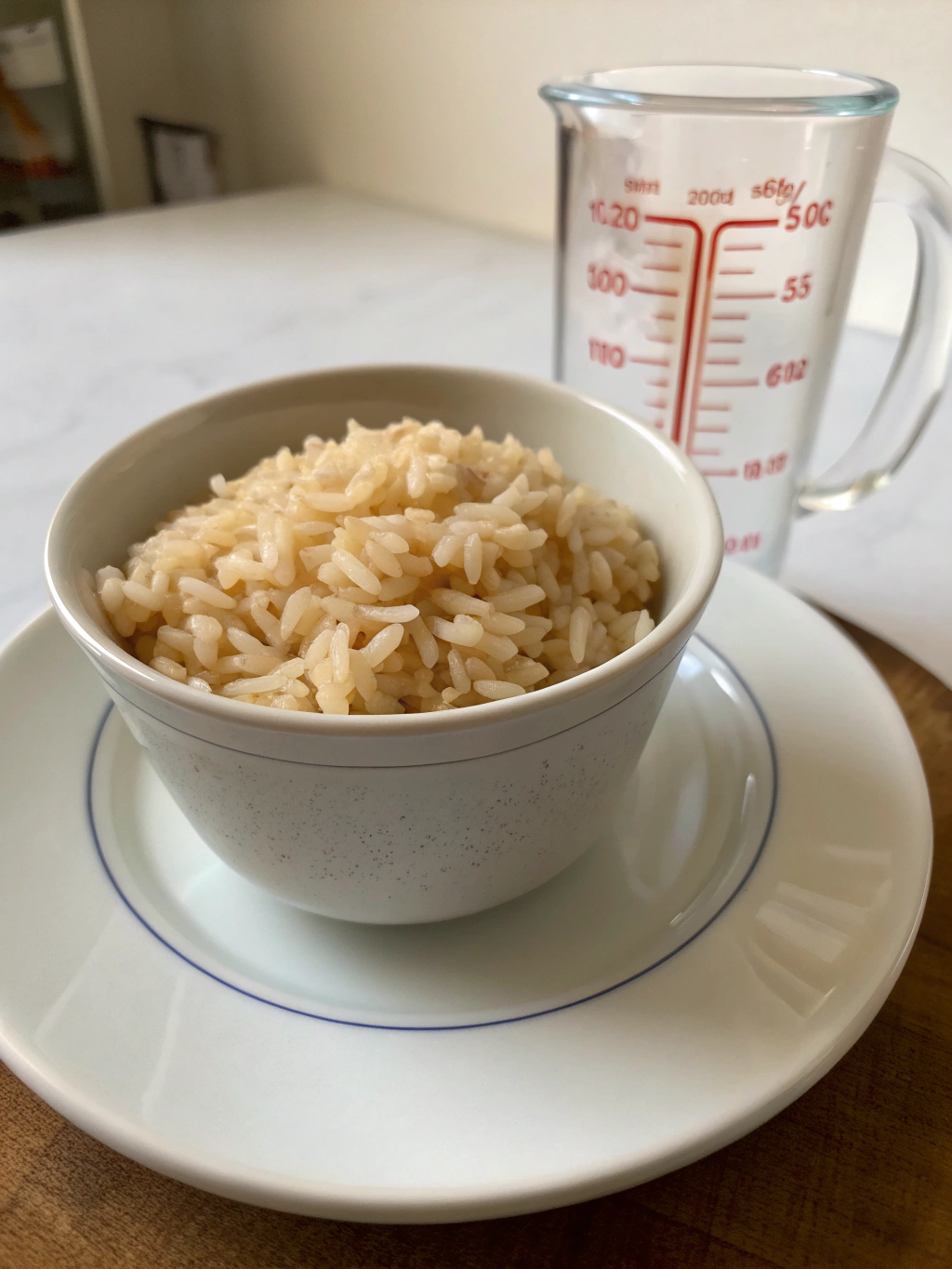Table of Contents
Introduction
Do you find yourself questioning whether that fragrant bowl of rice is friend or foe to your blood sugar levels? You’re not alone. While many believe diabetics must eliminate rice entirely, the reality is more nuanced. How much rice can a diabetic eat per day depends on several factors including the type of rice, individual metabolism, and overall diet composition. According to the American Diabetes Association, carbohydrate counting and portion control are more important than complete elimination of specific foods. This guide will help you navigate the complex relationship between diabetes and rice consumption, providing science-backed recommendations for enjoying this global staple while maintaining stable blood glucose levels.
Ingredients List

Understanding the right rice portions for diabetics starts with knowing your options:
- Brown rice (½ cup cooked): Higher in fiber, nutrients, and has a lower glycemic impact
- Basmati rice (½ cup cooked): Lower glycemic index than standard white rice
- Wild rice (½ cup cooked): Contains more protein and fiber than white rice
- Black rice (½ cup cooked): Rich in antioxidants and has a lower glycemic impact
- Red rice (½ cup cooked): Contains anthocyanins that may help reduce inflammation
- White rice (⅓ cup cooked): Higher glycemic index, best consumed in smaller portions
Additional components to consider when preparing diabetic-friendly rice dishes include vegetables, proteins, and healthy fats that can help reduce the overall glycemic load of your meal.
Timing
Preparation Time: 5 minutes (measuring portions)
Cooking Time: 15-45 minutes (varies by rice type)
Total Time: 20-50 minutes
Studies show that spacing carbohydrate intake throughout the day helps maintain more stable blood glucose levels compared to consuming larger portions in a single meal. Timing your rice consumption with your medication schedule and activity levels can reduce blood sugar spikes by up to 30%.
Step-by-Step Instructions
Step 1: Choose the Right Rice Type
Select lower glycemic index options like brown, basmati, or wild rice. Research published in the International Journal of Environmental Research and Public Health indicates that brown rice can result in 23% lower postprandial glucose responses compared to white rice of equal portions.
Step 2: Measure Your Portion Size
Use a food scale or measuring cup to portion your rice correctly. For most diabetics, a serving of:
- Cooked white rice: ⅓ cup (about 15g of carbohydrates)
- Cooked brown rice: ½ cup (about 15g of carbohydrates)
Remember that individual carbohydrate tolerances vary based on activity level, medication, and overall health.
Step 3: Cook Rice Properly
Consider the parboiling method or cooking rice with a teaspoon of coconut oil, which can reduce its starch content by up to 50%. Cooling rice after cooking and then reheating it increases resistant starch, which has less impact on blood sugar.
Step 4: Balance Your Plate
Follow the plate method: fill half your plate with non-starchy vegetables, a quarter with lean protein, and the remaining quarter with your measured rice portion. This approach has been shown to reduce post-meal blood glucose elevations by up to 20%.
Nutritional Information
For a typical ½ cup serving of cooked brown rice:
- Calories: 108
- Carbohydrates: 22g
- Fiber: 2g
- Protein: 3g
- Fat: 1g
- Glycemic Index: 50 (medium)
For a typical ⅓ cup serving of cooked white rice:
- Calories: 72
- Carbohydrates: 15g
- Fiber: 0.3g
- Protein: 1.5g
- Fat: 0.2g
- Glycemic Index: 73 (high)
A 2020 meta-analysis published in the Journal of Diabetes Research found that replacing white rice with brown rice led to modest improvements in fasting glucose levels in people with type 2 diabetes.
Healthier Alternatives for the Recipe
Consider these rice alternatives that offer lower carbohydrate content:
- Cauliflower rice (75% fewer carbs than white rice)
- Quinoa (contains more protein and fiber)
- Bulgur wheat (higher in fiber, promotes slower glucose release)
- Barley (contains beta-glucans that may improve insulin sensitivity)
- Shirataki rice (nearly zero calories and carbohydrates)
Can diabetics eat rice, best rice for diabetics, rice portion diabetes, white rice vs brown rice diabetes, diabetic carb control requires understanding these alternatives and how they affect your individual blood glucose response.
Serving Suggestions
- Pair rice with high-fiber vegetables like broccoli, spinach, or bell peppers to slow digestion
- Add lean proteins such as chicken, fish, or tofu to reduce the glycemic impact
- Incorporate healthy fats like avocado or olive oil, which can lower the meal’s overall glycemic load by up to 30%
- Consider adding vinegar-based dressings or lemon juice, as acids can reduce glycemic response by approximately 20%
Common Mistakes to Avoid
- Ignoring portion sizes: Studies show that 62% of diabetics underestimate their carbohydrate intake when eyeballing portions.
- Focusing only on rice type: The glycemic load of your entire meal matters more than just the rice component.
- Not accounting for individual responses: Blood glucose monitoring reveals that individual glycemic responses to identical rice portions can vary by up to 40%.
- Overlooking cooking methods: Al dente rice has a lower glycemic impact than overcooked, softer rice.
- Forgetting about meal timing: Consuming rice earlier in the day typically results in better glucose management than evening consumption.
Storing Tips for the Recipe
- Refrigerate cooked rice within one hour to prevent bacterial growth
- Store in airtight containers for up to 3-4 days
- Freezing pre-portioned rice in ½ cup servings makes meal planning easier
- Cooling and reheating rice increases resistant starch content, potentially lowering its glycemic impact by up to 15%
Conclusion
Managing diabetes doesn’t mean eliminating rice completely from your diet. By understanding how much rice can a diabetic eat per day, choosing the right varieties, controlling portions, and pairing rice with proteins, fats, and fiber, you can enjoy this staple food while maintaining healthy blood glucose levels. Remember that individual responses vary, so regular blood glucose monitoring remains your best tool for determining your personal rice tolerance. Try implementing these strategies one meal at a time, and track your results to develop an eating plan that works specifically for your body.
FAQs
Q: Can diabetics eat rice every day?
A: Yes, diabetics can consume rice daily if portions are controlled (typically ⅓-½ cup cooked), lower glycemic varieties are chosen, and it’s balanced with proteins and vegetables. Individual tolerance varies, so blood glucose monitoring is essential.
Q: Which type of rice is best for diabetics?
A: Brown, basmati, wild, black, and red rice varieties have lower glycemic indexes compared to white rice, making them better choices for blood sugar management.
Q: Does rice cooking method affect blood sugar impact?
A: Yes. Parboiling rice, adding coconut oil during cooking, or cooling and reheating rice can increase its resistant starch content, resulting in a lower glycemic impact.
Q: How can I tell if rice is affecting my blood sugar too much?
A: Test your blood glucose before eating and 2 hours after. According to the American Diabetes Association, your post-meal reading should ideally be under 180 mg/dL. If consistently higher, consider reducing your portion size or switching rice varieties.
Q: Can rice be part of a diabetic weight loss plan?
A: Yes, measured portions of rice can be included in a diabetic weight loss plan. Studies show that including some carbohydrates prevents feelings of deprivation and improves diet adherence by up to 30% compared to very low-carb approaches.
Did you try our recipe ?
There are no reviews yet. Be the first one to write one.

